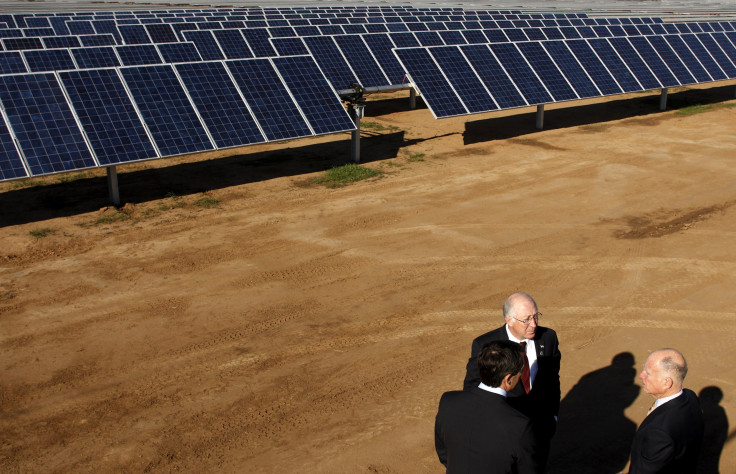Solar Energy Might Get Cheaper Using Honeycomb Design Similar To Insect Eyes

Solar panels have already taken off with companies such as Elon Musk’s SolarCity investing in it, but the fact remains that even though solar energy is cheaper over time, the infrastructure is costly to install.
This might change with solar panels made using a material called Perovskites, a calcium titanium oxide mineral made of calcium titanate, which in 2009 was discovered to absorb sunlight and generate electricity. It is widely available in nature and therefore cheaper than silicon, of which conventional solar panels are made.
“Perovskites are promising, low-cost materials that convert sunlight to electricity as efficiently as conventional solar cells made of silicon,” Reinhold Dauskardt, a professor of materials science and engineering at Stanford University.
The only drawback of substituting silicon with perovskites was its fragility and vulnerability to the elements.
To find a solution to this drawback, Dauskardt led a study and zeroed in on the answer in the structure of insect eyes.
The study titled "Scaffold-reinforced perovskite compound solar cells" proposes a honeycomb structure of perovskites microcells, each encapsulated in a hexagon shaped scaffold made of an inexpensive epoxy resin widely used in the microelectronics industry.
The study was published in the journal Energy & Environmental Science.
Packing microcells, which make up solar cells, in such a way makes them more durable when the cells come into contact with heat, moisture or mechanical stress.
“We were inspired by the compound eye of the fly, which consists of hundreds of tiny segmented eyes. It has a beautiful honeycomb shape with built-in redundancy: If you lose one segment, hundreds of others will operate. Each segment is very fragile, but it’s shielded by a scaffold wall around it,” Dauskardt further explained.
Since the scaffold, around 0.02 inches wide, will be made of cheap epoxy resin, it will not increase the cost of the panels. It also passed tests in which it was seen to have very little impact on the process of perovskites converting solar energy into electricity.
Researchers tested the perovskites cells in temperatures of up to 185 degree Fahrenheit (85 degree centigrade) and 85 percent humidity for six weeks and the cells were still able to generate electricity at high rates of efficiency.
The research team has filed a provisional patent for the technology and is now studying ways of distributing light through the scaffold to the core of each cell. If they succeed, the researchers might help create solar panels that are not just cheaper than the current ones, but also more efficient.
While the current administration is betting on coal, the fact remains that the solar energy industry is growing and innovating by the day.
With companies such as SolarCity investing in it, there is no dearth of patrons of solar energy. But the true test of strength of solar energy will be demonstrated only by large scale adoption by households. And cheaper solar panels might go a long way in convincing homeowners to switch from traditional sources of electricity to solar energy based sources.
© Copyright IBTimes 2025. All rights reserved.



















